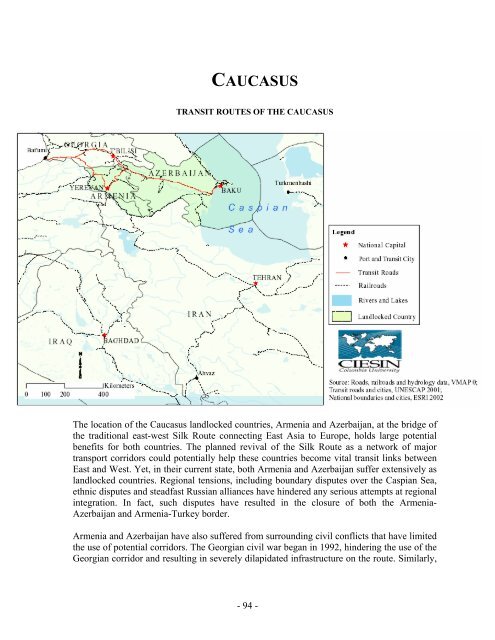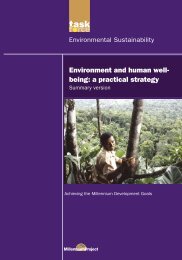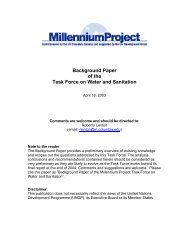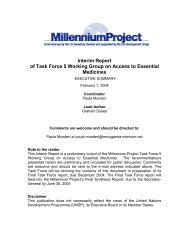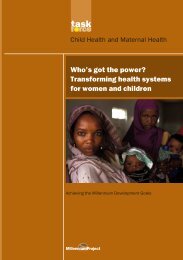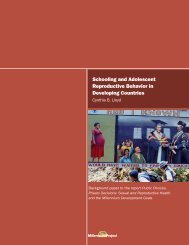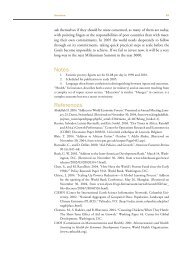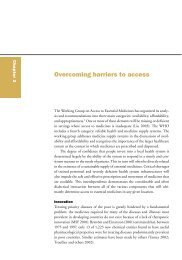the challenges facing landlocked developing countries: a case study ...
the challenges facing landlocked developing countries: a case study ...
the challenges facing landlocked developing countries: a case study ...
Create successful ePaper yourself
Turn your PDF publications into a flip-book with our unique Google optimized e-Paper software.
CAUCASUS<br />
TRANSIT ROUTES OF THE CAUCASUS<br />
The location of <strong>the</strong> Caucasus <strong>landlocked</strong> <strong>countries</strong>, Armenia and Azerbaijan, at <strong>the</strong> bridge of<br />
<strong>the</strong> traditional east-west Silk Route connecting East Asia to Europe, holds large potential<br />
benefits for both <strong>countries</strong>. The planned revival of <strong>the</strong> Silk Route as a network of major<br />
transport corridors could potentially help <strong>the</strong>se <strong>countries</strong> become vital transit links between<br />
East and West. Yet, in <strong>the</strong>ir current state, both Armenia and Azerbaijan suffer extensively as<br />
<strong>landlocked</strong> <strong>countries</strong>. Regional tensions, including boundary disputes over <strong>the</strong> Caspian Sea,<br />
ethnic disputes and steadfast Russian alliances have hindered any serious attempts at regional<br />
integration. In fact, such disputes have resulted in <strong>the</strong> closure of both <strong>the</strong> Armenia-<br />
Azerbaijan and Armenia-Turkey border.<br />
Armenia and Azerbaijan have also suffered from surrounding civil conflicts that have limited<br />
<strong>the</strong> use of potential corridors. The Georgian civil war began in 1992, hindering <strong>the</strong> use of <strong>the</strong><br />
Georgian corridor and resulting in severely dilapidated infrastructure on <strong>the</strong> route. Similarly,<br />
- 94 -


